
Admin News
by Dr. Gwyn Underwood, Superintendent
Thanks so much to CIS Corporation Members for attending our AGM last Tuesday. In addition to completing the corporate functions required for us as Cebu International School, inc., we:
- thanked our outgoing Board of Trustee members:
- Mr. Quisumbing (outgoing Chairman), who has served on the Board since 2016
- Mr. Jeffery Lee who has served on the Board since 2017
- Mr. Edwin Galeos (outgoing Secretary), who has served on the Board since 2018
- welcomed our new Board of Trustee members for 2023/24:
- Mr. Joshua de Manuel
- Mrs. Shai Gica
- Mr. Mozart Reina
- thanked and recognized the service of our returning Board of Trustee members for 2023/24:
- Mrs. Katherine Rivera (incoming Board Chair/past Vice Chair))
- Ms. Maite Moraza (incoming Vice Chair)
- Mr. Wolf Kekert (Treasurer)
- Mrs. Jill Figueroa (incoming Secretary)
- Mr. James Doran-Webb (Trustee)

- Ms. Fiona King (Trustee)
- Mr. Bruce Shin (Trustee)
- held inquiry-based learning conversations discussing aspects surrounding the question, “What is our narrative?” that were designed to build relationships and gain a shared understanding of who we are!
It is so refreshing to work with a diverse group of committed and dedicated parents whose focus remains on what is best for the students of Cebu International School.
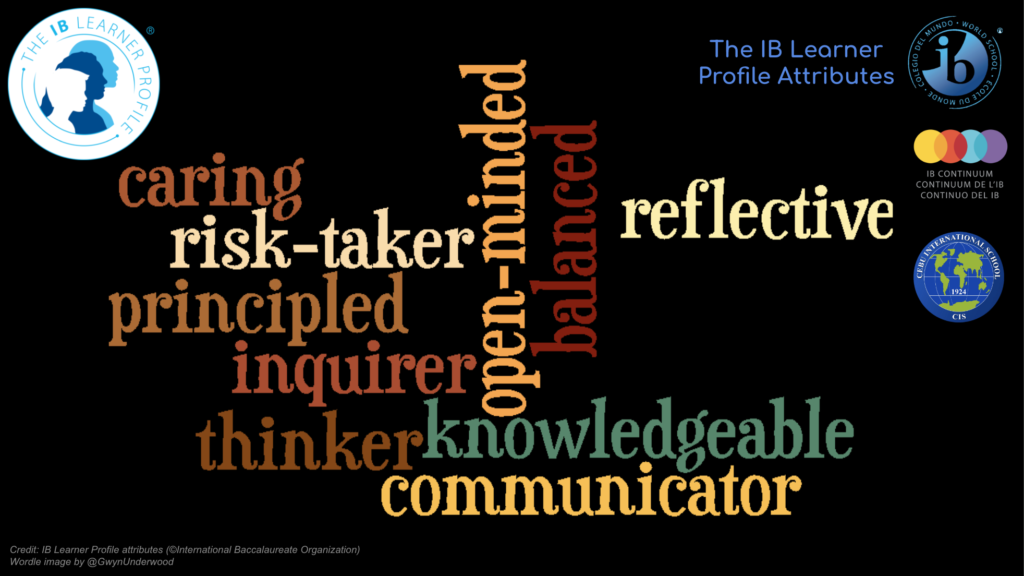
Upcoming events of note
- Sept. 23: CIS Touch Rugby Series (PM)
- Sept. 26: Parent Coffee Morning (International Day Prep focus)
- Sep 29-30: MUN Locals conference (Manila)
- Oct 2 – 6: October break (School holiday)
- Oct 16-20 & 21 Culture week, culminating with International Day on Sat 21st
Please refer to the CIS Event Calendar for the complete calendar of school events.
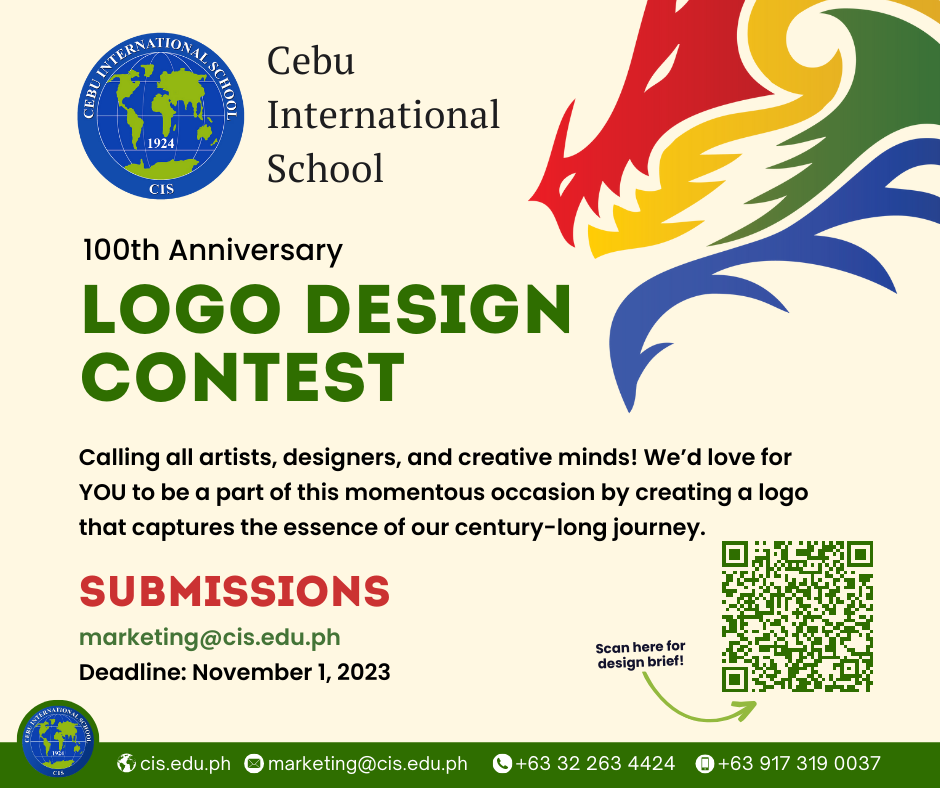
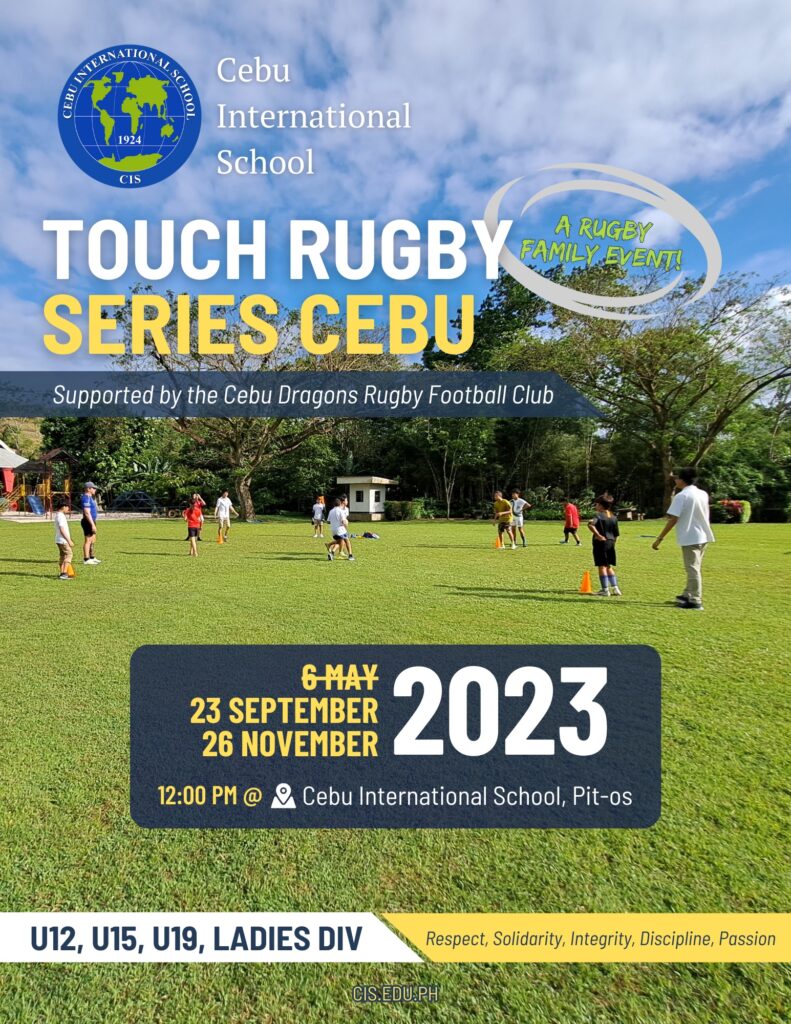
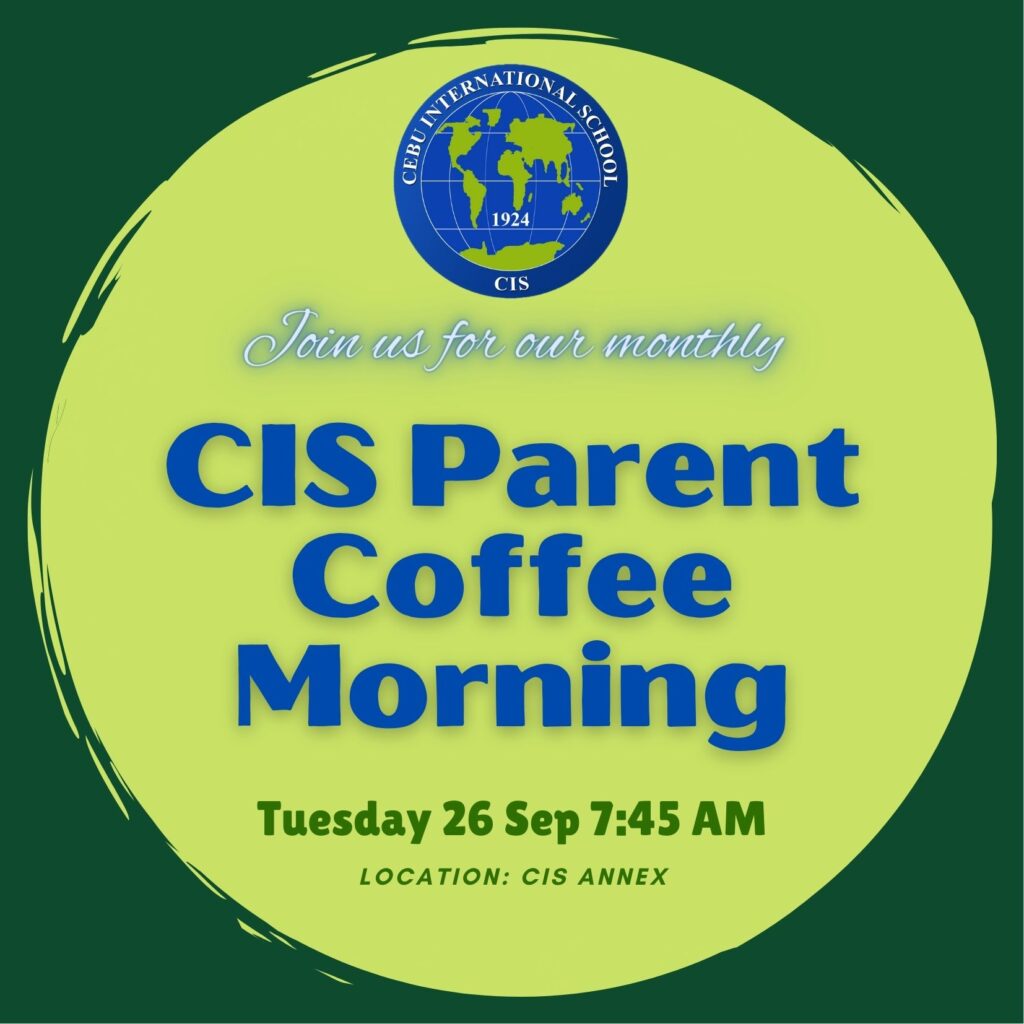
Kinder and Grade 1 Class
by Ms. Tara Alagao and Ms. Bebelin Tubilan, K/G1 Homeroom Teachers
Four Pillars of Health
Our Kinder and Grade 1 students have embarked on an exciting journey exploring the unit under the transdisciplinary theme Who We Are, with a central idea “Making balanced choices enables people to be healthy.” This unit has provided our students with the opportunity to inquire into the four pillars of health: eating a balanced meal, practicing good hygiene, engaging in regular exercise, and getting enough rest. To kick off this unit, the Kinder and Grade 1 students were asked if they understood the concept of balance and what it looks like. They enthusiastically expressed their preferences for foods they would love to have for lunch, and many of them grasped the idea that a balanced meal requires a variety of foods from the five healthy food groups.

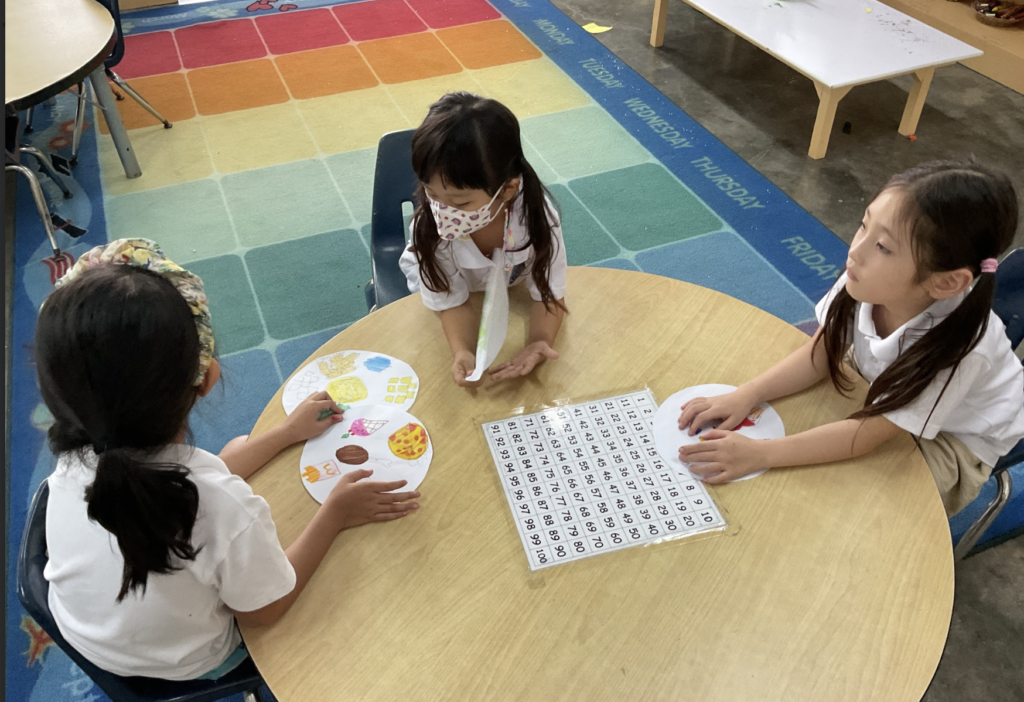
Next, the students delved into the significance of exercise and rest in maintaining good health. They learned that warming up and cooling down are crucial for safety during physical activities, and they understand the importance of taking care of their bodies while being active. As a group, they also combined different stretching exercises they know to create a daily routine, which they now follow when they enter the classroom and before starting their day.
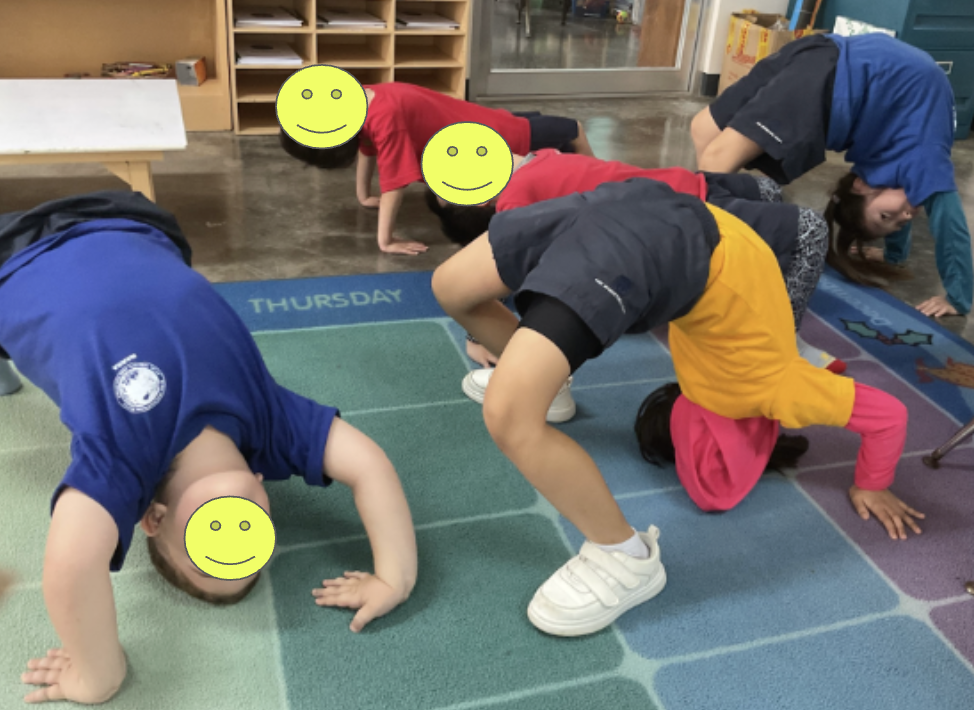
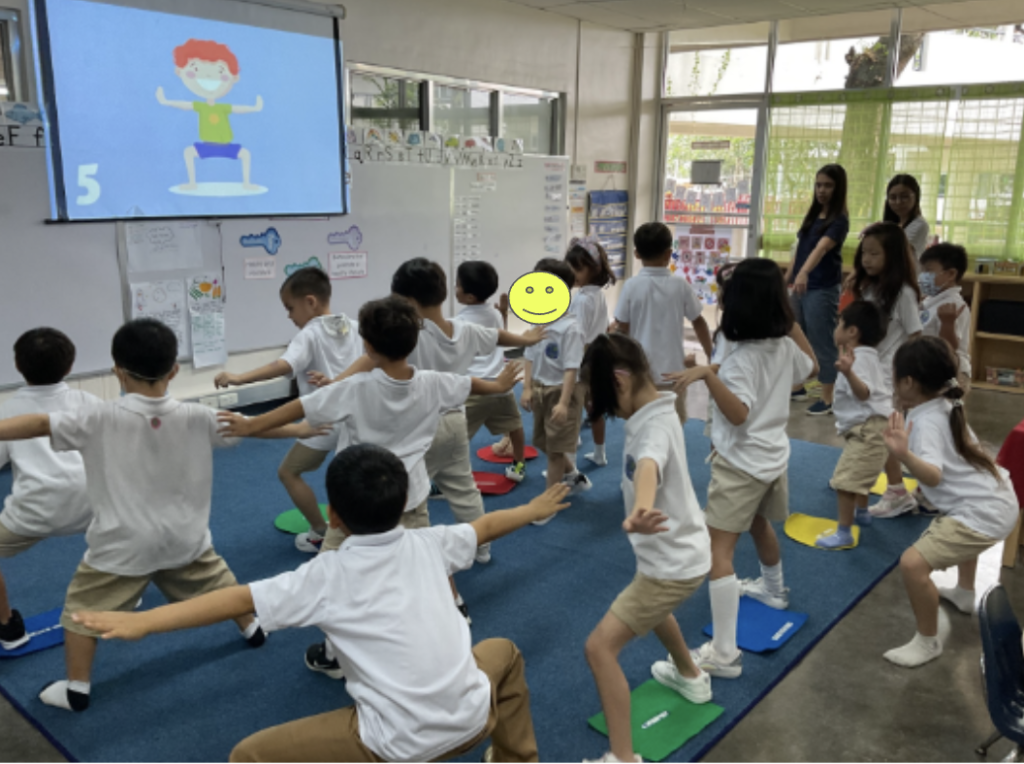
Hygiene, another vital aspect of balance, was also explored. Our students discovered that proper hygiene practices, such as brushing their teeth, taking baths, trimming their nails, and changing clothes and socks, contribute to overall well-being. They drew connections between these habits and the routines they follow at home.
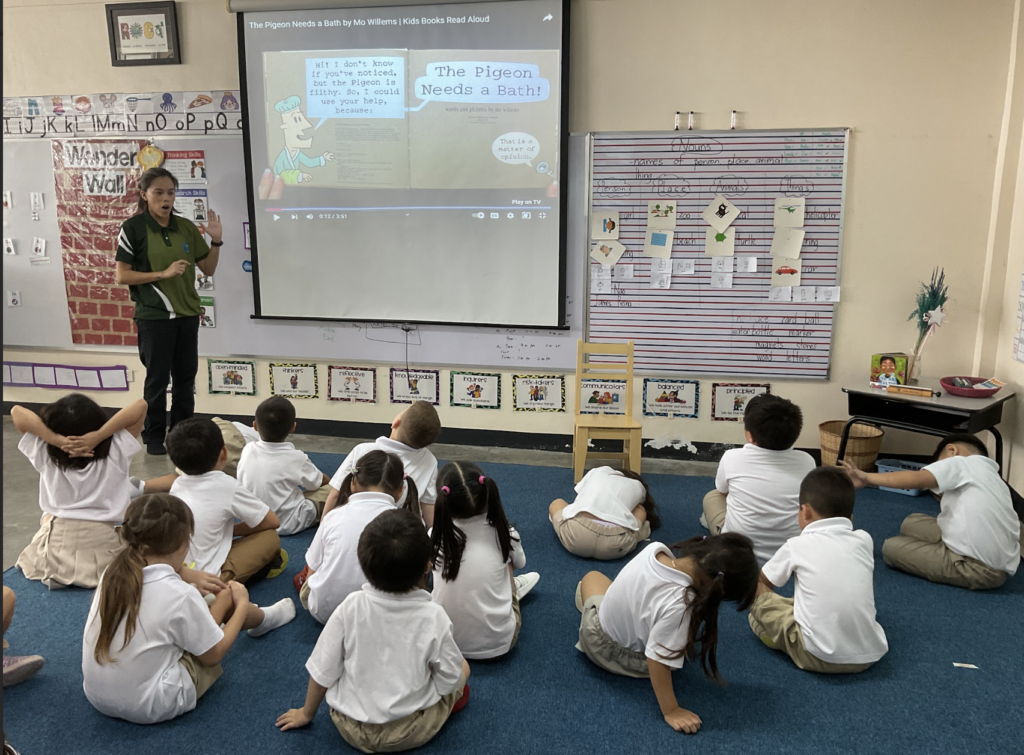
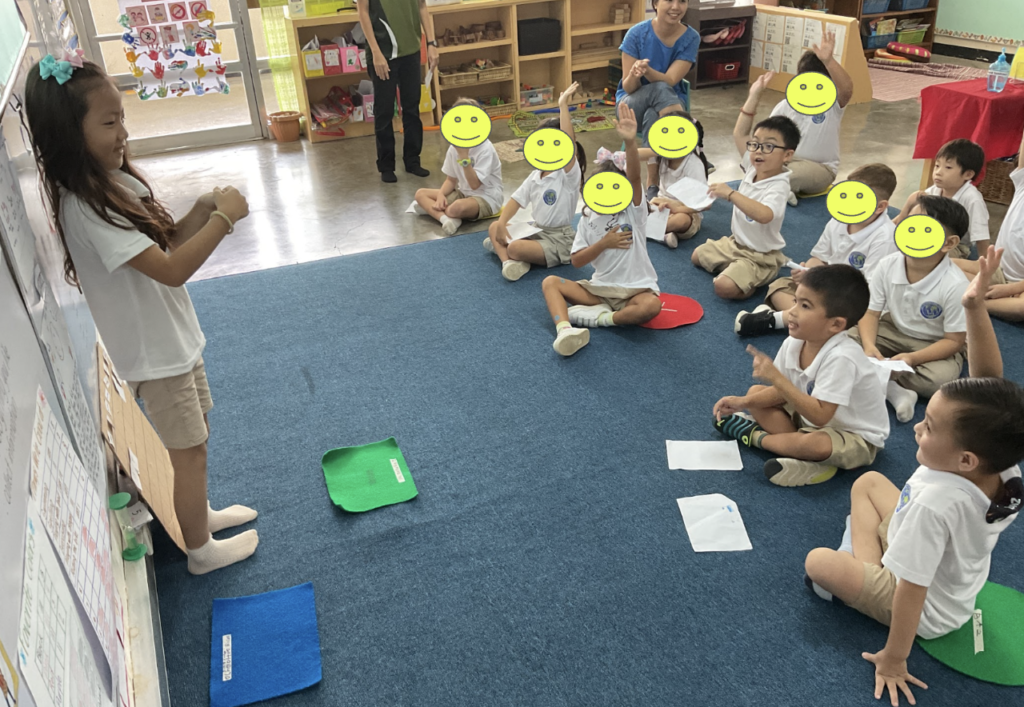
The last pillar, having a growth mindset, is one of the concepts that the Kinder and Grade 1 students looked into. This was also a perfect time to incorporate goal-setting to encourage them to maintain a positive attitude in overcoming challenges and learning from mistakes. To reinforce their understanding of the four pillars of health, the students created a checklist of routines to follow at home. They took responsibility for their well-being by reflecting each day on the actions they chose to take and noting the potential consequences of not making healthy choices.

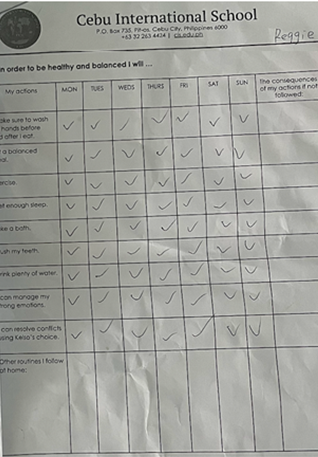
To conclude the unit, the Kinder and Grade 1 students brainstormed actions they could take to share their understanding of the pillars of health with the community. They hope to inspire the community to reflect on their lifestyle choices for the purpose of health and balance.

DP History Paper 1 Overview
by Ms. Joy Pierra, DP History Teacher
In the world of International Baccalaureate (IB) assessments, one exam holds significant weight for history students: Paper 1. This external assessment is a pivotal component of an IB student’s academic journey, accounting for 30% of the overall grade for Standard Level (SL) students and 20% for Higher Level (HL) students. Here’s a breakdown of this exam.
Question 1: Comprehension Mastery (5 minutes)
The journey begins with Question #1, where students are tasked with extracting the essence of the source. This allows students to analyze and succinctly articulate the message that the sources convey. These could be text, photos, or cartoons. Success here ensures five valuable points towards their score.
Question 2: Source Usefulness and Credibility (10 minutes)
Question #2 delves into the vital realm of source assessment. Students apply the OPCVL method, rigorously examining the origin, purpose, and content of sources. The aim? To evaluate the sources’ utility and reliability in shedding light on historical figures, documents, or events. A maximum of four marks awaits those who adeptly navigate this question.
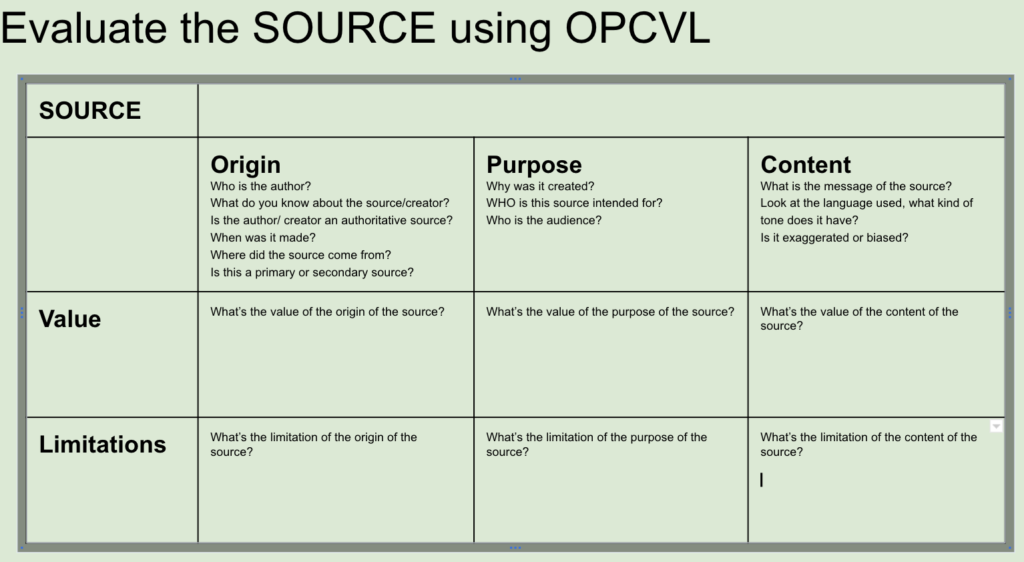
Question 3: Source Comparison and Contrast (15 minutes)
Next up, Question #3 thrusts students into a thrilling comparative analysis. Here, they embark on an exploration of the similarities and differences between two sources. Utilizing evidence from these sources is paramount as they substantiate their insights. A total of six points awaits those who skillfully elucidate these connections and disparities.

Question 4: The Grand Finale – The Historical Essay (30 minutes)
As we near the conclusion of this intense hour-long exam, students face the pinnacle of their challenge in Question #4. This question unleashes their essay-writing prowess, with the added twist of integrating at least three sources to support their arguments. Sources become key companions in constructing a well-reasoned historical narrative. It’s here that students can incorporate their personal knowledge and understanding, elevating their responses to new heights. To help students organize their thoughts in the essay, they’re required to follow the PEEAL format. The grand prize? An impressive nine marks for a masterfully crafted essay.
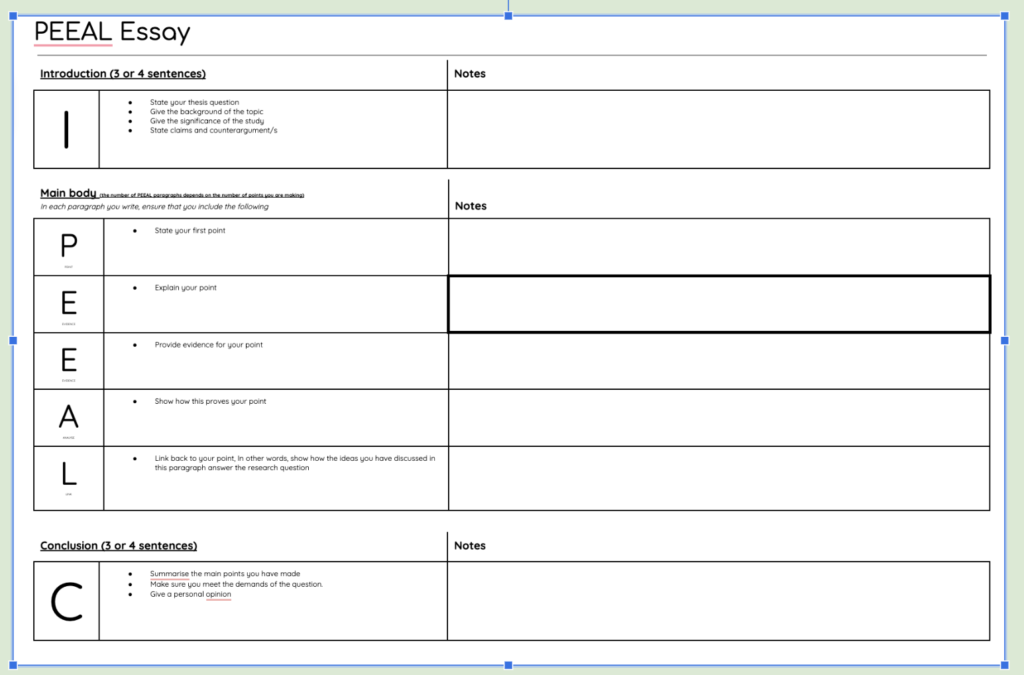
In this high-stakes academic endeavor, IB history students are tasked with not only showcasing their source analysis skills but also their capacity to weave together historical narratives. As the clock ticks down, they draw upon these skills to navigate the intricate web of history’s tapestry.
Here are some of the History 11 students’ thoughts after taking their first Paper 1 exam.
Which question in Paper 1 do you feel most confident about? Why?
Renzo
Elijah
Which question is the most challenging in Paper 1? Why?
Renzo
How will you better prepare for Paper 1 next time?
Elijah
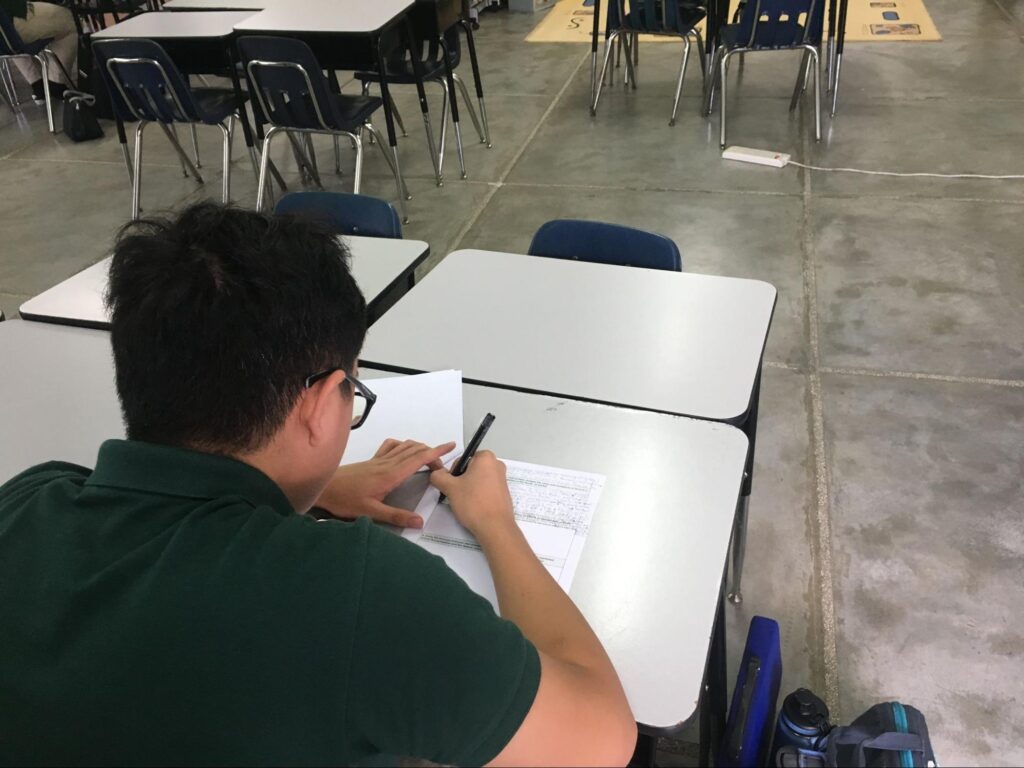
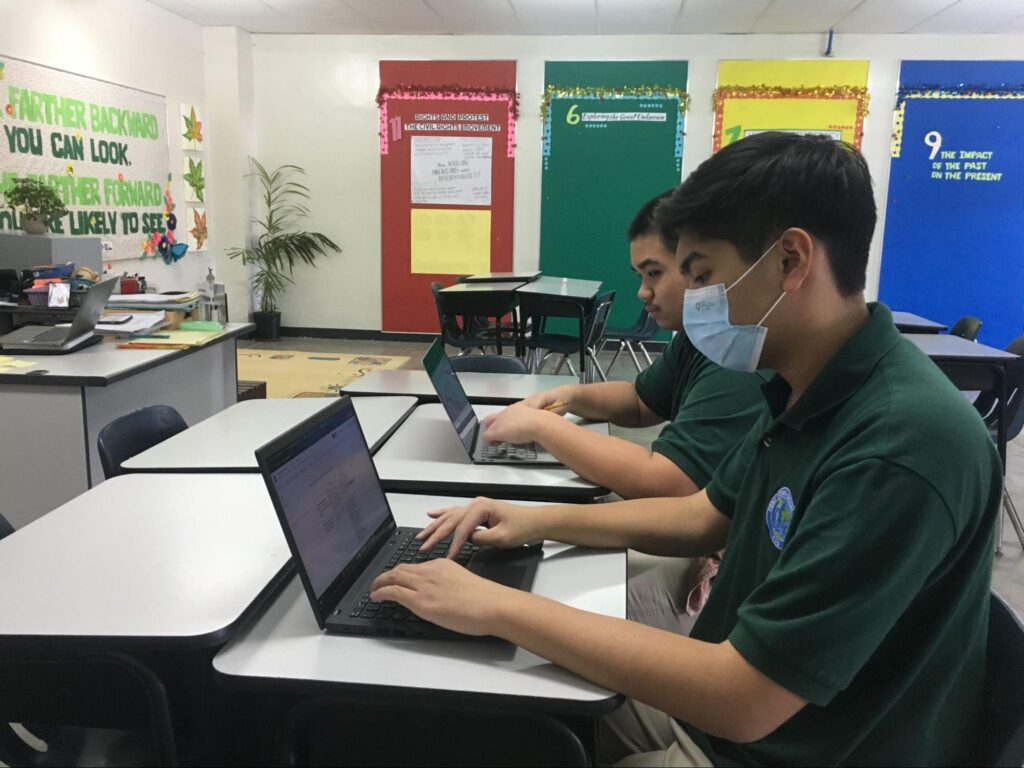
Grade 6: Design Technology Class
by Mr. Jessie Saclo, Design Teachnology Teacher
Product Innovation
In its global campaign for a circular economy, the European Union recently approved a waste-reduction regulation set for implementation in 2027, mandating manufacturers of portable appliances to incorporate user-friendly replaceable batteries. The regulation which is aimed to benefit consumers is directed on existing trends in the design and manufacture of smartphones, tablets, laptops, electric bikes and e-scooters. Design experts are already predicting a significant global impact on the design, innovation and manufacture of these devices that will potentially reshape the playing field for electronic behemoths such as Samsung and Apple.
According to the MYP, design and the outcomes of new technologies have led to immense changes in society, profoundly transforming the way we process information, adapt our environment, communicate with others, and solve problems. The recent EU regulation is a clear example on how design and the design process are essential elements in societal change.
 The MYP design framework incorporates inquiry and problem-solving at its core, cultivating rigid student learning through the application and use of the design cycle. As a tool, the design cycle provides the methodology necessary to engage students through four criteria: inquiring and analysing, developing ideas, creating the solution, and evaluating. Solutions in MYP design can manifest as a prototype, model, product, or system that students have independently developed.
The MYP design framework incorporates inquiry and problem-solving at its core, cultivating rigid student learning through the application and use of the design cycle. As a tool, the design cycle provides the methodology necessary to engage students through four criteria: inquiring and analysing, developing ideas, creating the solution, and evaluating. Solutions in MYP design can manifest as a prototype, model, product, or system that students have independently developed.
Our grade six design unit, aptly named ‘Product Innovation,’ explores the concepts of communication, innovation, and perspective through the statement of inquiry: ‘Communicating ideas through technological innovations can influence perspectives.’ Students began building their understanding of the design process by navigating the unit through discussions, inquiries, research, and feedback. They embarked on the task of identifying problems in existing products, initially constructing inquiry questions aligned with our identified concepts. As the unit progressed, they researched and analyzed products to develop creative and innovative solutions. Their solutions are rooted in actual product data and supplemented by their own success criteria.
The diverse results of our students’ research and solutions serve as a sound indicator of how well they comprehend the stages of inquiry, analysis, and idea development. Take some time to view and appreciate their work.
The Dragon’s Report Card
As the new school year begins, new faces are introduced to the school community. Hear about them, their interests, and why they transferred in this exciting new episode!
College/Careers Counselor Corner
by Ms. Jenny Basa, College/Careers Counselor Corner
Where do our graduates go?

DATE
September 27
Wednesday
9:00 – 9:40AM
Canteen Annex
Link to sign up
EVENT
Hong Kong University of Science & Technology – an Info session on the application process, programs and scholarships at HKUST.

September 28
Thursday
9:00 – 9:40AM
Canteen Annex
Link to sign up
Enderun Colleges – an Info session on the application process, programs and scholarships at Enderun.
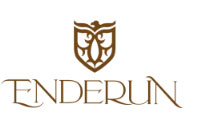
September 29
Friday
9:00 – 9:45 AM
Canteen Annex
Mini College Fair
Mini College Fair sponsored by ApplyAbroad – Meet with university reps from various institutions from Canada and talk to them about the application process, programs and other offerings.
List of institutions:
Canada: Algoma University & MacEwan University
Australia: Edith Cowan University & Torrens University
USA: South New Hampshire University

October 10
Tuesday
9:00 – 9:45 AM
Canteen Annex
Study in Japan visit: Meet admission reps from Japanese universities and learn about their programs, the application process and scholarships offered.

October 12
Thursday
9:00 – 9:45 AM
Dragon’s Dome
Education USA College Fair – meet with university reps from 24 institutions from the US. List of universities to follow
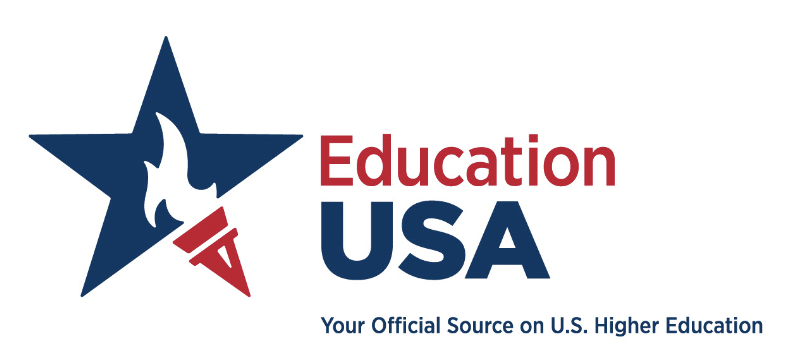
October 13
Friday
9:00 – 9:45 AM
Canteen Annex
Mini Workshop for Grade 11 students: Writing your College Essay – Students will learn strategies on how to write a college essay. The resource speaker is an admissions representative from York College Pennsylvania, USA. Seniors who missed this workshop last school year are welcome to attend.
October 13
Friday
10:15 – 11:25 AM
Canteen Annex
Workshop on How to prepare your Art Portfolio – Learn from a graduate of Savannah College of Art & Design on how to prepare your Art Portfolio for college applications to art universities.

SAT Update
2023–24 School Year Test Dates
| Test Date | Deadline for Registration, Changes and Regular Cancellation |
| August 26, 2023 | August 11, 2023 |
| October 7, 2023 | September 22, 2023 |
| December 2, 2023 | November 17, 2023 |
| March 9, 2024 | To be confirmed |
| May 4, 2024 | To be confirmed |
| June 1, 2024 | To be confirmed |
To register for the SAT, you may click on this link. If you need assistance or have any questions, please feel free to email Ms. Jenny Basa at jbasa@cis.edu.ph.



